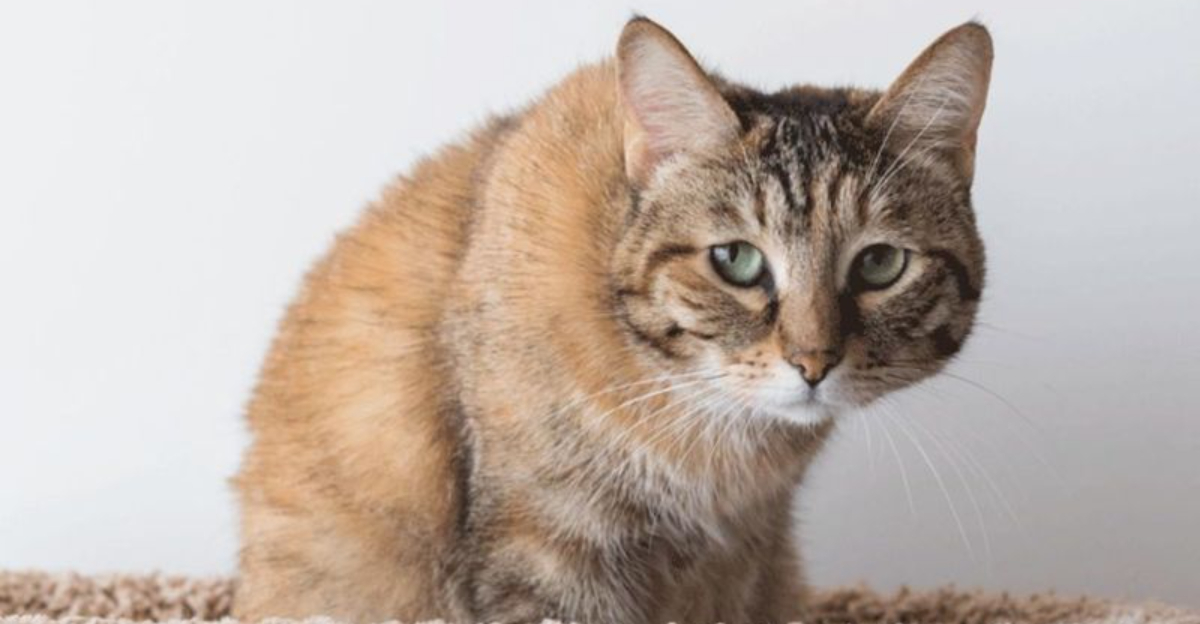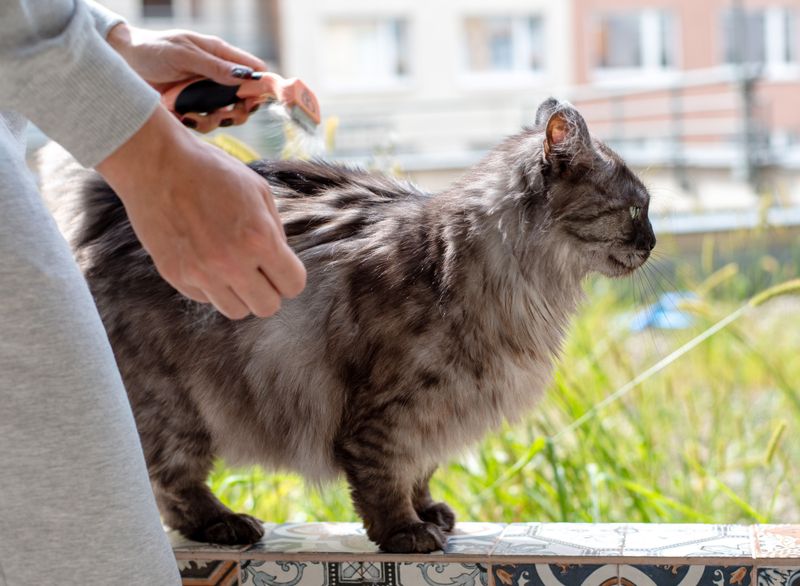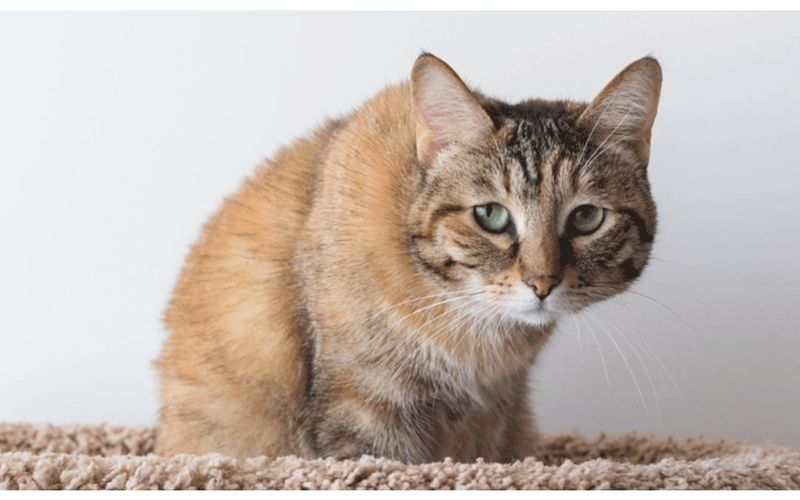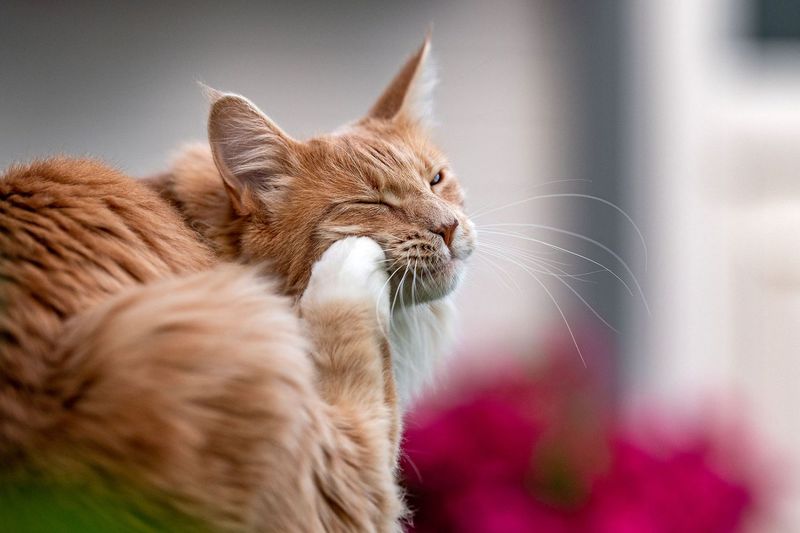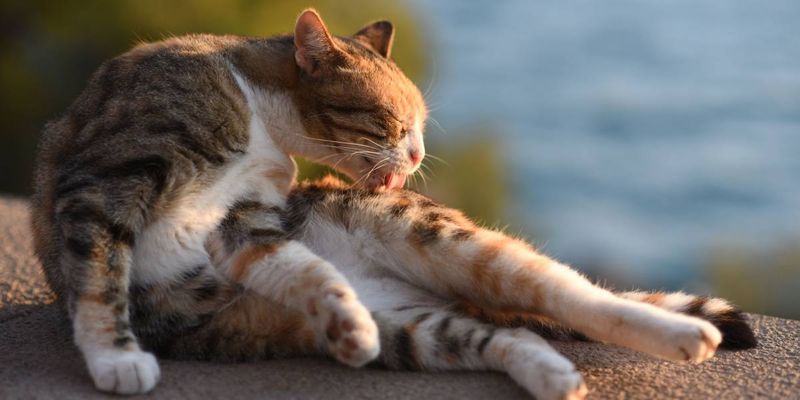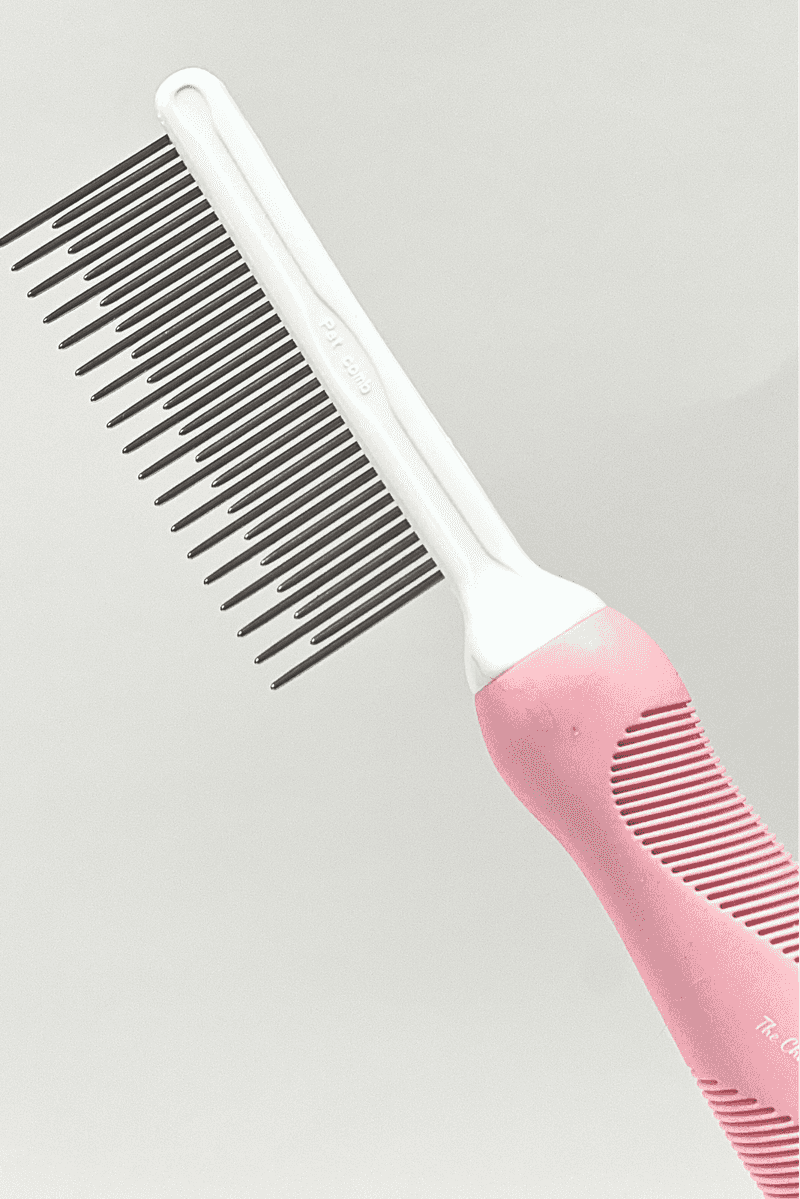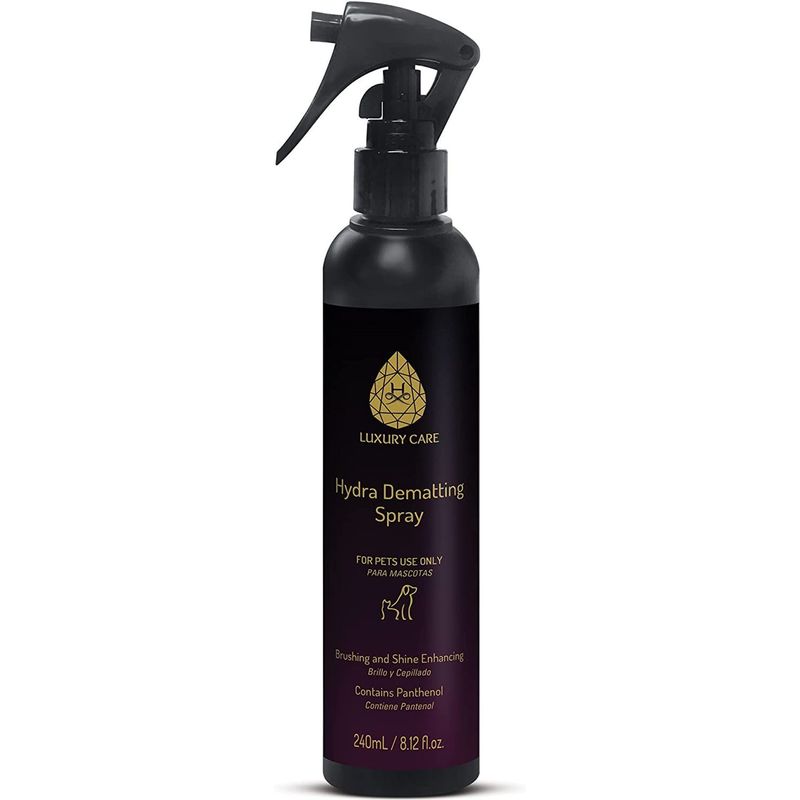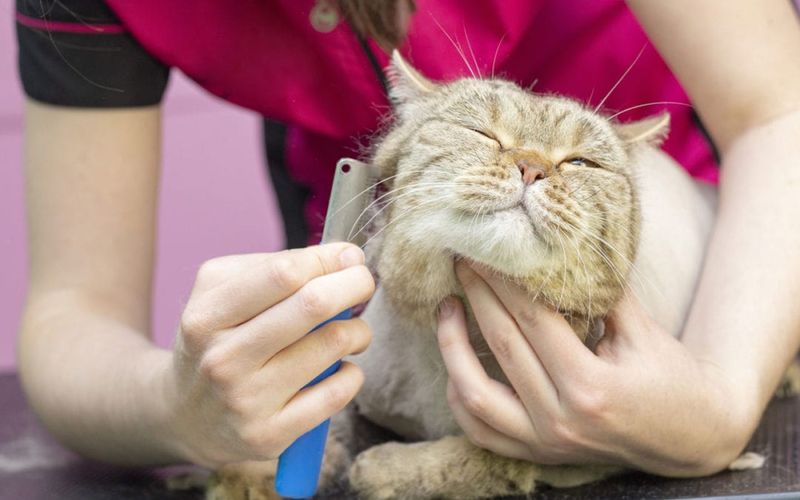📖 Table of Content:
- 1. Clumps or Knots in the Fur
- 2. Reluctance to Be Touched
- 3. Unusual Scratching or Biting
- 4. Changes in Grooming Behavior
- 5. Skin Inflammation or Odor
- 6. Visible Discomfort When Moving
- 1. Use a Detangling Comb or Mat Splitter
- 2. Try a Mat Removal Spray
- 3. Clip (Don’t Cut) Stubborn Mats
- 4. Make Grooming a Routine
- 5. Call a Professional Groomer or Vet
Cat owners are often faced with the challenge of dealing with matted fur. This common issue not only affects the aesthetic appeal of your feline friend but can also lead to discomfort and health problems. Understanding the signs of matting and knowing how to handle them is key to maintaining your cat’s well-being.
This guide will walk you through six telltale signs that your cat is struggling with matting and provide five effective methods to treat and prevent this issue. Let’s dive into the details and ensure your cat stays happy and healthy.
1. Clumps or Knots in the Fur
Have you noticed tangled clumps in your cat’s fur? These knots are not just unsightly; they’re uncomfortable for your pet. Typically found behind the ears, under the legs, on the belly, and around the tail, they can be tight and hard to the touch.
Cats with longer fur are more prone to this issue, as their hair tends to intertwine and form knots. These clumps can trap dirt and moisture, leading to skin irritation or infections.
Regular grooming can help prevent these tangles, ensuring your cat’s coat remains smooth and healthy.
2. Reluctance to Be Touched
Sometimes, a cat’s reluctance to be touched isn’t a sign of aloofness. If your feline friend suddenly resists petting or grooming, especially in particular areas, it might be due to discomfort caused by mats.
These tangled patches of fur can pull at the skin, causing pain or irritation. This reaction can be particularly noticeable when trying to pet or groom areas where mats often form.
Addressing this issue promptly with gentle detangling can help restore your cat’s love for cuddles.
3. Unusual Scratching or Biting
Has your cat been scratching or biting at a specific patch of fur more than usual? This behavior can be a sign of irritation beneath a mat.
When mats form, they can create a tight pull on the skin, leading to discomfort. Moreover, these areas can become breeding grounds for skin infections if not treated.
Observing and addressing such behavior early can prevent further complications. Gently loosening or removing these mats can provide your cat some much-needed relief.
4. Changes in Grooming Behavior
Cats are generally meticulous groomers, so a noticeable change in grooming habits is a red flag. If your cat stops grooming itself, it can be due to age, obesity, arthritis, or illness.
These conditions can lead to mats as unkempt fur begins to tangle and clump. Regular brushing becomes essential to prevent these issues from escalating.
Providing additional grooming support to your cat, especially as they age, can help maintain their coat’s health and prevent matting.
5. Skin Inflammation or Odor
Mats left untreated can trap dirt and moisture, leading to red and inflamed skin. Have you noticed a foul odor emanating from your cat’s coat? This can indicate bacteria or fungus developing beneath the mats.
Such conditions can quickly lead to more severe skin issues if not addressed promptly. Regularly inspecting and grooming your cat’s fur can prevent such problems.
Seeking veterinary advice is crucial if the skin appears severely inflamed or infected.
6. Visible Discomfort When Moving
When mats form around joints, they can limit your cat’s mobility. You might notice your cat moving stiffly, appearing slower, or hesitating to jump and climb.
These movements can become painful if the mats are pulling on sensitive areas. This restriction can affect your cat’s quality of life, causing them to be less active and playful.
Regular grooming and quick attention to any signs of discomfort can prevent mats from impacting your cat’s movement significantly.
1. Use a Detangling Comb or Mat Splitter
Dealing with mats can be daunting, but the right tools can make a difference. Using a detangling comb or mat splitter can help work through smaller tangles without hurting your cat.
Always remember to go slow and hold the base of the mat to minimize pulling on your cat’s skin. Regular use of these tools can prevent mats from becoming a recurring issue.
Making grooming a bonding activity will also help your cat become more comfortable with the process over time.
2. Try a Mat Removal Spray
If your cat’s fur tangles easily, a mat removal spray can be a lifesaver. These cat-safe conditioning sprays help loosen the mats, making them easier to comb out.
Make sure to choose a formula specifically made for pets to avoid any harmful chemicals. Applying it gently can make grooming a more pleasant experience for both you and your cat.
Incorporating this spray into your regular grooming routine can help maintain a sleek and mat-free coat.
3. Clip (Don’t Cut) Stubborn Mats
For those stubborn mats that refuse to budge, clipping might be the solution. Use blunt-tipped grooming scissors or pet clippers to tackle tight mats, especially if they’re close to the skin.
Cutting can be risky, as it’s easy to accidentally snip your cat’s skin. It’s important to be cautious and gentle during this process.
If you’re unsure or uncomfortable, consulting a professional groomer can ensure your cat’s safety while removing these problematic mats.
4. Make Grooming a Routine
Prevention is better than a cure, and a consistent grooming routine is key to avoiding matting. Regular brushing—daily for long-haired cats and weekly for short-haired ones—keeps the fur untangled.
Approach grooming as a bonding time instead of a chore. Your cat will appreciate the attention and care, and you’ll prevent mats from forming.
Establishing this routine early on will make it easier as your cat grows older, ensuring their coat remains healthy and mat-free.
5. Call a Professional Groomer or Vet
Sometimes, mats can be too extensive or close to the skin for safe home removal. In such cases, it’s best to call in the experts. A professional groomer or vet has the experience and tools to safely remove mats without causing harm.
They can also check for any underlying skin issues that may need attention.
Regular visits to a groomer can maintain your cat’s coat and help detect any potential problems early, ensuring your feline friend stays comfortable and healthy.
